Grizzly 399: Where to Photograph the World’s Most Famous Bear
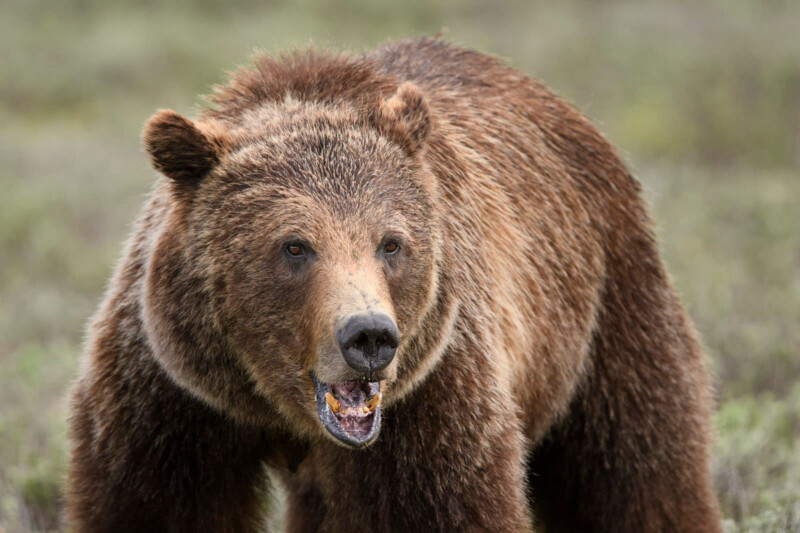
When a grizzly bear appears in Wyoming’s Grand Teton or Yellowstone National Park, traffic comes to a grinding halt. Hundreds of cars get stuck in a traffic jam that can go on for miles – called a bear jam – and everyone’s heart rate goes up in the hopes of spotting this legendary predator. Seeing a wild grizzly is the highlight of many family vacations.
Who is Grizzly 399?
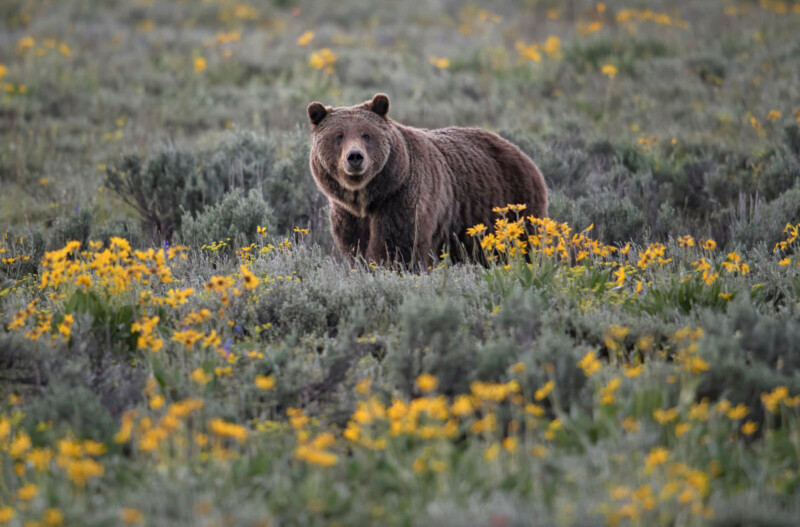
399 was born in the winter of 1996. She was given her name, “number 399,” in 2001 by the Interagency Grizzly Bear Study Team, a group of scientists and biologists responsible for the long-term monitoring and research efforts on grizzly bears in the Greater Yellowstone Ecosystem (GYE).
Seeing that grizzlies have an estimated life span in the wild of 20 to 25 years, 399 can be considered a senior citizen: she turned 27 this winter. Will she make it through another cold Yellowstone winter? Will she defy all expectations and emerge from her winter den in the spring of 2023 with new cubs in tow?
It wouldn’t be the first time Grizzly 399 surprised the world. In 2020, at the old age of 24, after a long and brutal winter during which the Greater Yellowstone Ecosystem received 11 feet of snow and temperatures dipped down to minus 25 F (minus 31 C), she emerged from her den with no less than four new cubs in tow! An impressive feat, especially since the federal Interagency Grizzly Bear Study Team had never seen a litter of four at 399’s age. But what’s more: the oldest known grizzly in the area to have cubs was 27 years old, and that’s the age 399 will be in 2023.
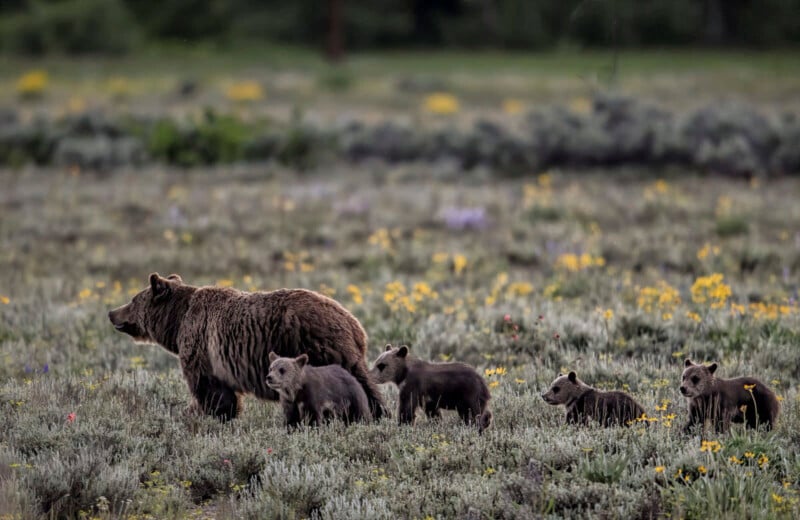
Why is Grizzly 399 Famous?
Whereas a typical grizzly chooses to live its life in the backcountry, far away from human activity, 399 has chosen to spend at least part of her life being close to humans.
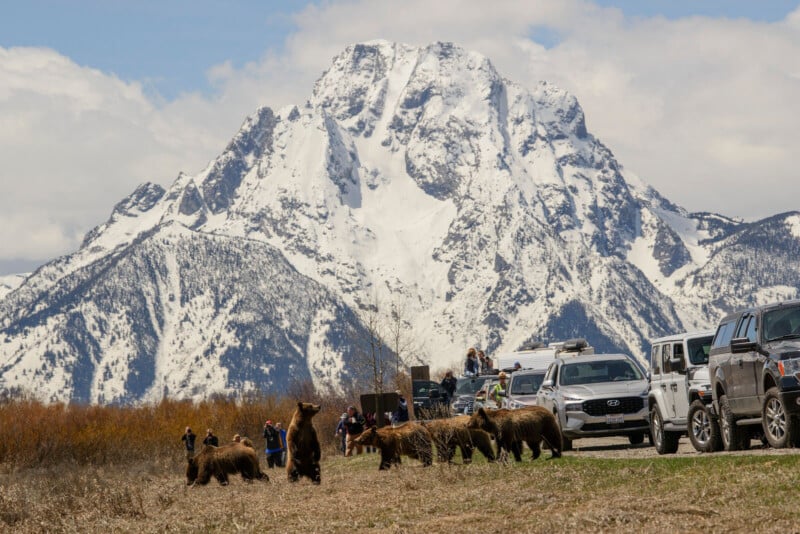
Some believe this is a deliberate strategy to keep her cubs safe: 399, like some other grizzly sows in the area, raises her cubs near roadsides and developed areas to keep them safe from male grizzlies – who are known to kill cubs – that spend most of their lives in the backcountry.
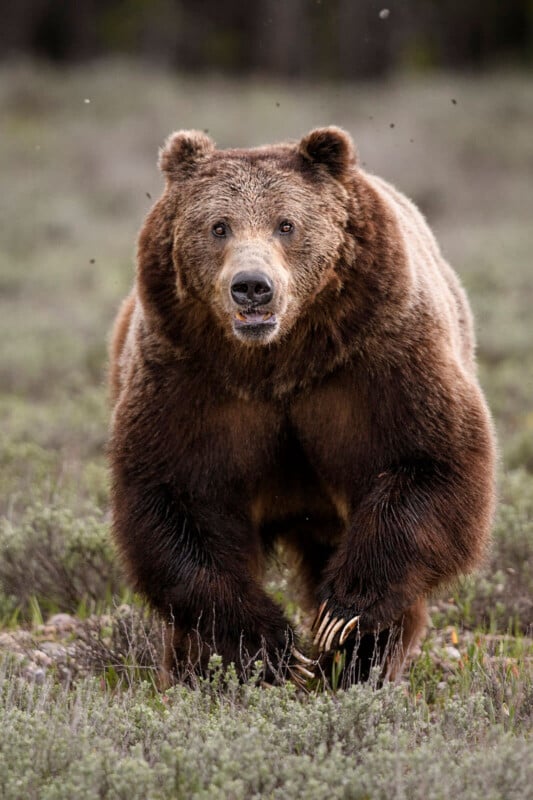
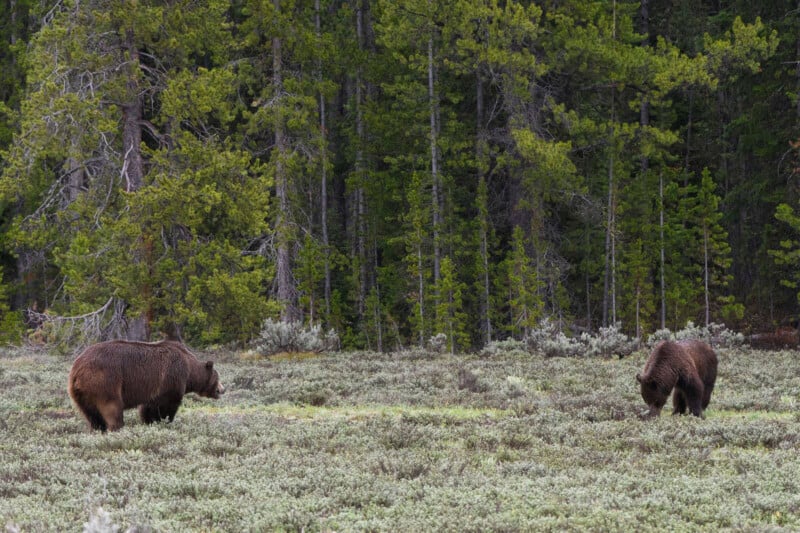
Male grizzlies (or “boars”) kill cubs in order for the grizzly sow to stop lactating and go back into reproduction mode. That relatively easy visibility near park roads makes her and similar bears nothing less than tourist and photographer magnets. If you’ve always wanted to photograph a wild grizzly bear from the safety of your car, Grand Teton National Park is the place to be come April and May.
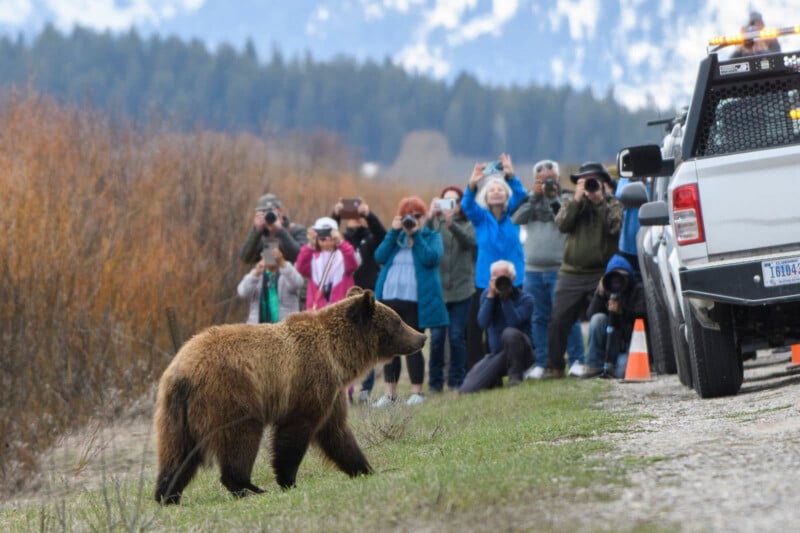
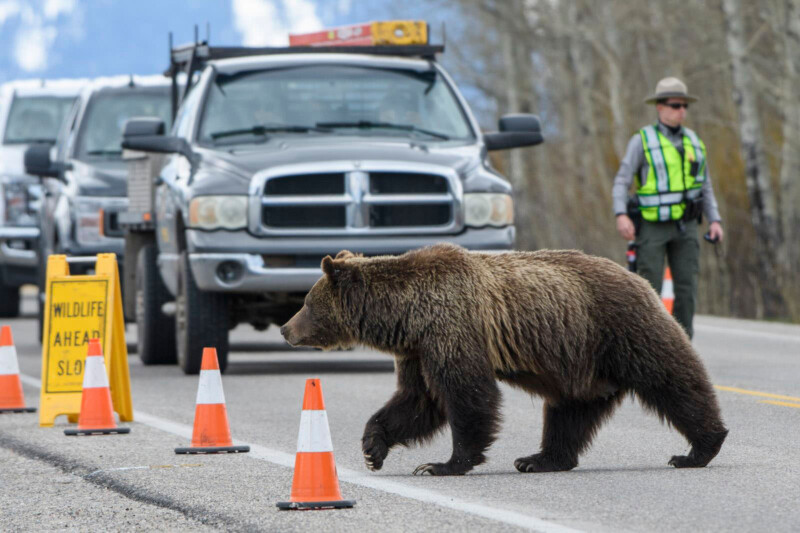
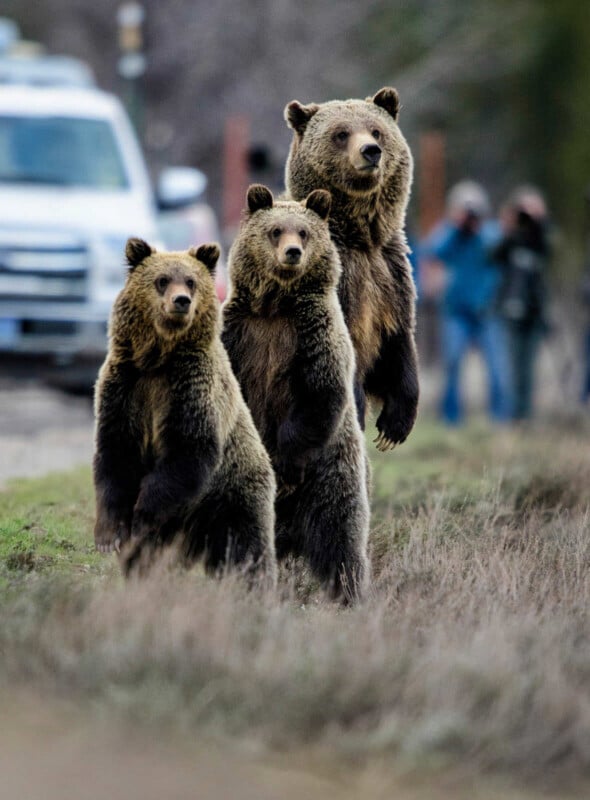
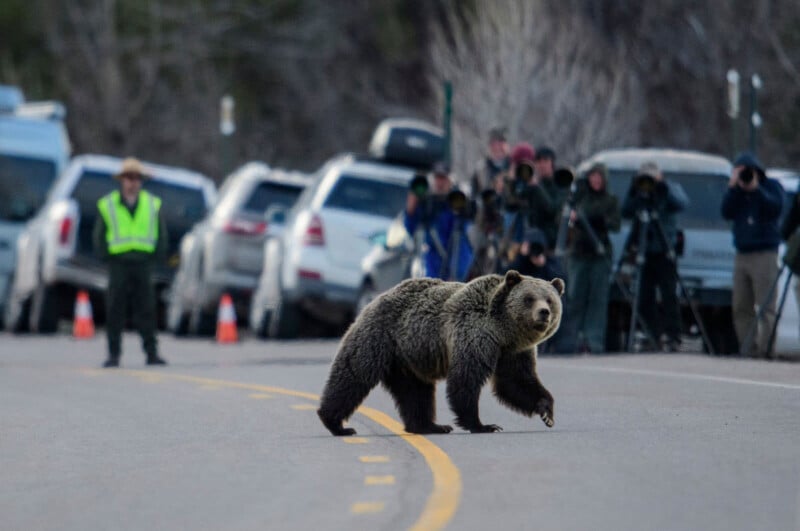
In her life span so far, she is believed to have produced at least 22 descendants, including the cubs that her offspring have birthed over the years. That’s impressive were it not that this isn’t as rosy as it sounds. About half of her offspring is believed dead.
There is the sad story of her daughter, Grizzly #615, who was shot by a poacher. Some have been killed by cars, like her only 2016 cub, “Snowy.” Others still are believed to have been killed by male grizzlies. An estimated 85% of grizzlies never make it to 399’s age. All of this to say that life isn’t easy and guaranteed, even when you’re at the top of the food chain in the animal kingdom.
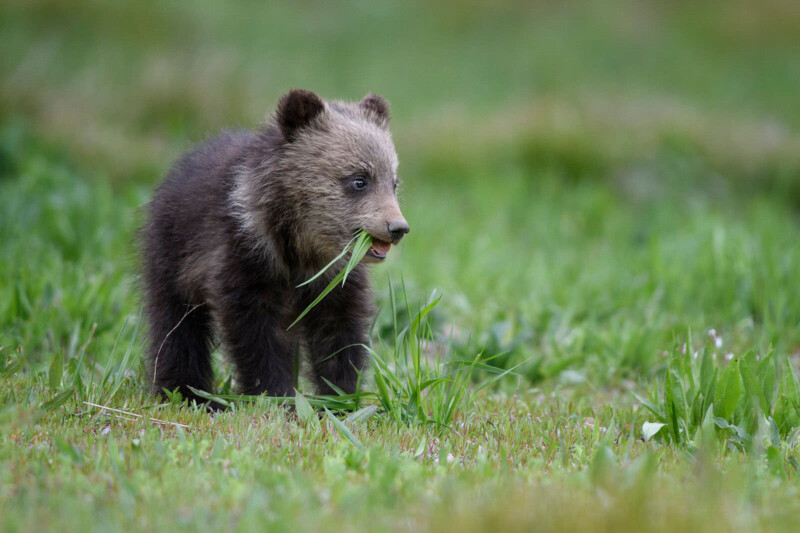
Grizzly 399, Celebrity Mother and Grandmother
Her most famous offspring; a grizzly sow identified by the federal Interagency Grizzly Bear Study Team as 610; is also regularly seen in Grand Teton National Park. Born as one of 399’s triplets in 2006, Grizzly 610 is currently caring for three cubs born in 2022 and, as if in a fairy tale, is actually still close to her mother.
In June of 2020, 399 with her four cubs at the time and 610 with her two cubs were seen meeting each other in Grand Teton National Park. Contrary to popular beliefs that grizzly sows with cubs are aggressive towards other adult bears, both bears recognized each other and the six cubs played together.
In fact, back in 2011, when 399 had triplets and 610 had twins, 610 willingly adopted one of her mother’s cubs: 610 ended up raising triplets while 399 raised her two remaining cubs.
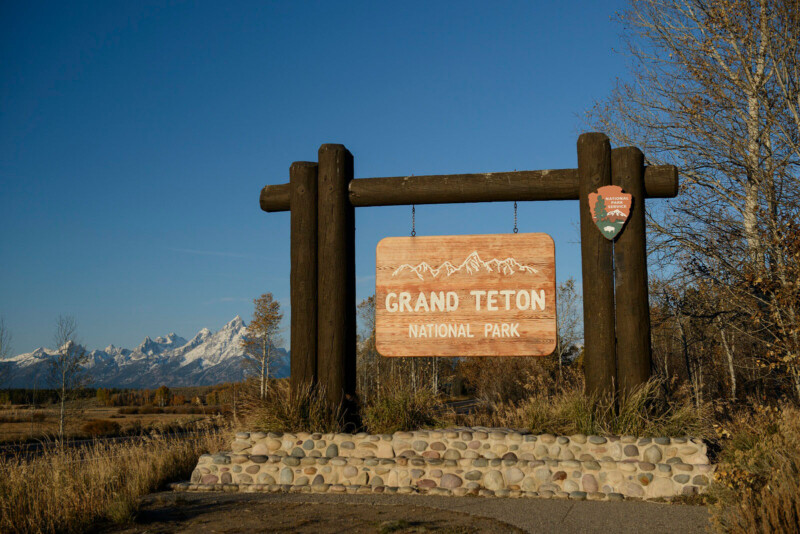
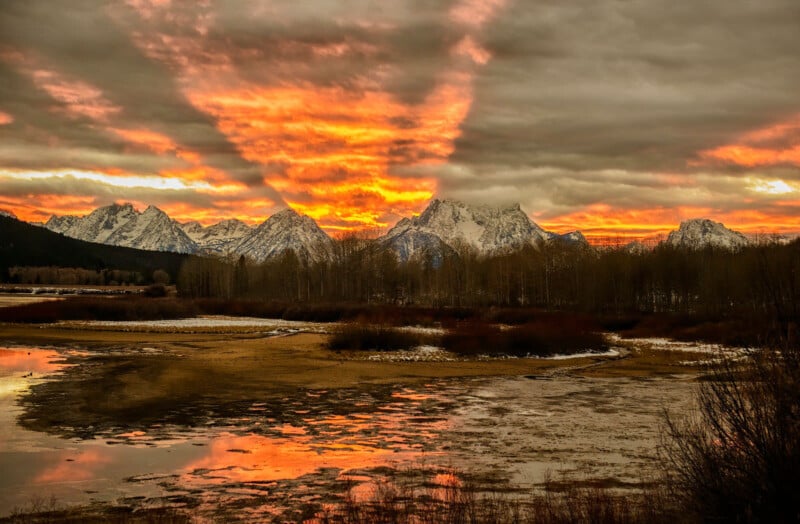

Celebrity 399, “Queen of the Tetons”
Things occasionally get crazy during a bear jam. We all love to experience the bears (and other wildlife) but some of us seem to forget at times that these are in fact wild animals and that the National Park is not a petting zoo. These bears are wild animals and are, at last check, stronger and faster than any human alive.
To keep everyone safe, since 2007, Grand Teton National Park enrolls a special group of volunteers called the “Grand Teton Wildlife Brigade.” In fact, it was due to the popularity of Grizzly 399 emerging from her den with three cubs back in 2007 that the brigade was formed. Their mission is to keep the wildlife and the tourists safe, for example, by enforcing the minimum required distance of 100 yards from bears and wolves, and 25 yards from the park’s other animals. When talking to some of these volunteers, it becomes clear that managing the wildlife isn’t the problem… it’s managing the people.
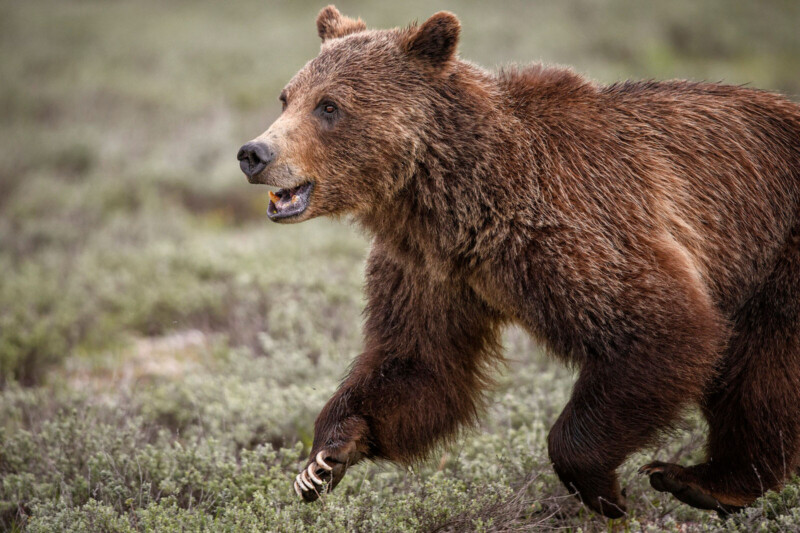
Grizzly 399, estimated to be weighing in at 350 pounds and standing 7 feet tall on her hind legs, has had one close encounter with a visitor so far. Or at least, one during which she made contact; little doubt she has had other surprise encounters with (sometimes reckless) visitors. Back in 2007, a school teacher set out on a walk near Jackson Lake Lodge in the park and inadvertently surprised 399 and her cubs while they were feeding on an elk carcass. 399 charged and bit the teacher before retreating. Luckily, 399 was spared because she acted as nature intended in defense of her cubs.
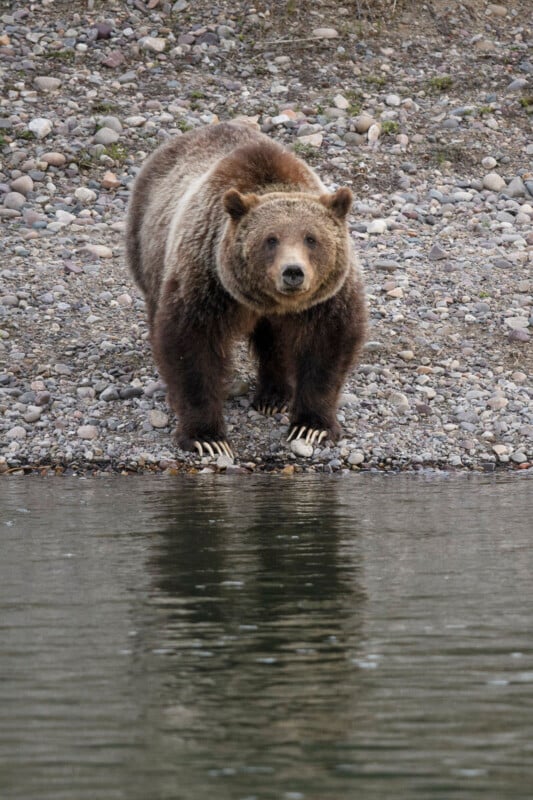
Recommended Equipment to Photograph the Bears
Long lenses are king when it comes to photographing potentially dangerous wildlife. Assuming you’re going to take most of your grizzly bear images from the safety of your car or the roadside, the longer the lens, the better. A prime 500mm, 600mm, or 800mm lens works well as do the zoom options like the 200-600 or 150-600mm lenses.
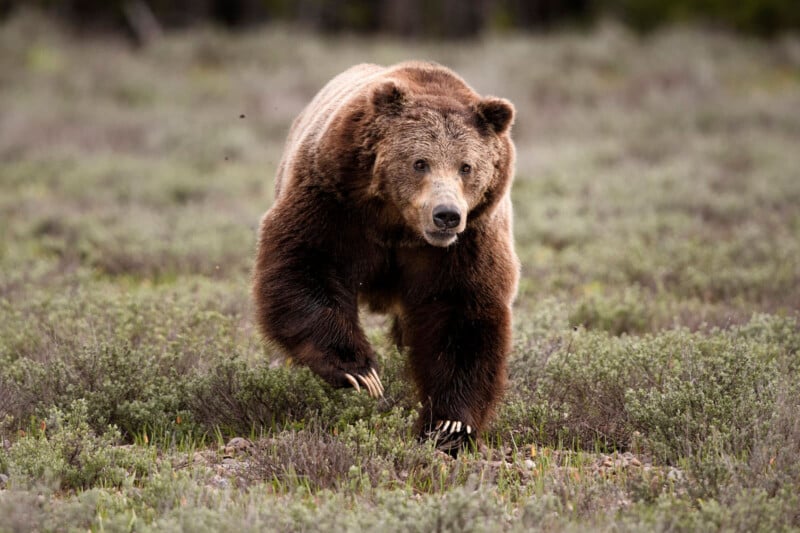
The best time of the year to photograph the bears is the two-month period or so between the bears waking up from hibernation in April-May and the summer heat pushing them into higher elevations, typically late June into July.
My favorite places to photograph grizzlies in the GYE are Yellowstone’s Lamar Valley and Eastern entrance area towards Cody, and Grand Teton’s Pilgrim Creek area between Willow Flats and Colter Bay.
Will She Appear with New Cubs in 2023?
If you are planning to visit the Yellowstone area this spring, expect a crowd. Wildlife lovers around the world will be waiting for the news: will 27-year-old 399 appear with new cubs?
After kicking out her four 2.5-year-old cubs in late spring of 2022, Grizzly 399 was seen on several occasions with a male grizzly boar. The boar persistently stayed with her during mating season. If successful, the new babies were born sometime in January 2023, weighing one pound each. Drinking their mother’s milk, they grow rapidly and all emerge from the winter den sometime in May. All eyes are peeled on the roadsides in Grand Teton National Park for 399 and maybe new cubs.
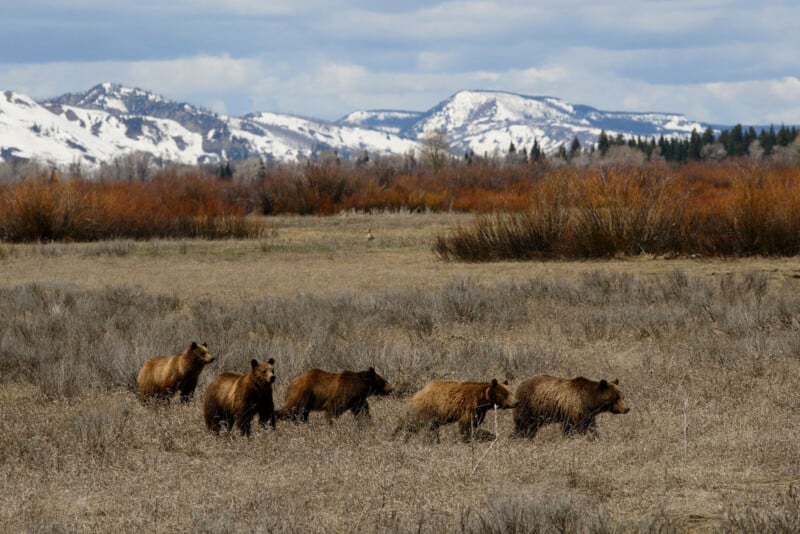
What Will the Future Bring for 399?
The future is by no means guaranteed for these extraordinary creatures. Other than the normal dangers of car collisions and poaching, there is the risk of running into trouble in human neighborhoods as happened to one of 399’s four cubs in the spring of 2022: Wyoming’s Game & Fish department killed the cub for reportedly seeking food in human settlements outside of National Park borders.
And, there is the ever-looming threat of trophy hunters getting their way in turning these magnificent bears into a wall ornament or a living room rug. In early 2022, Wyoming’s governor Mark Gordon asked the Federal Government to delist the grizzly from the Endangered Species List. If and when approved, this will see the trophy hunting of grizzly bears.
The harsh reality is that, were it not for one judge who halted the trophy hunt in 2018, 399 may well have ended up killed by now.
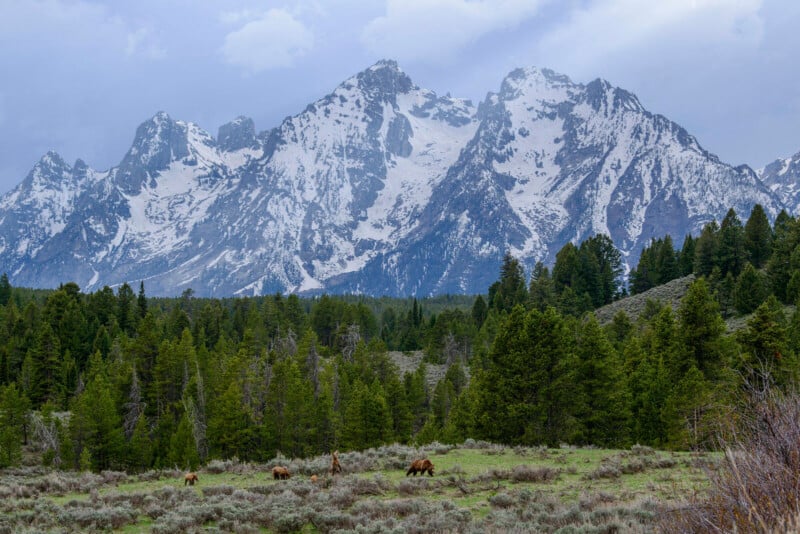
With the millions of dollars streaming into the coffers of the state of Wyoming thanks to Grand Teton and Yellowstone National Parks, a substantial part due to the popularity of the grizzlies, economics don’t seem to be considered as Wyoming Game & Fish Commission voted unanimously to approve the grizzly hunt. Nor are the countless hours of joy that a bear like 399 provides to millions of park visitors annually.
For now, all is well. 399 Is safely asleep in her winter den, not knowing that her plight is being debated and followed by millions around the world. And that her life, even after she will be long gone, will continue to play a big part in the future of grizzly bears as determined by the one animal truly at the top of the food chain: all of us.
About the author: Jorn Vangoidtsenhoven is a freelance wildlife and conservation photographer based in New Mexico. You can find more of Vangoidtsenhoven’s work on his website, Facebook, and Instagram.